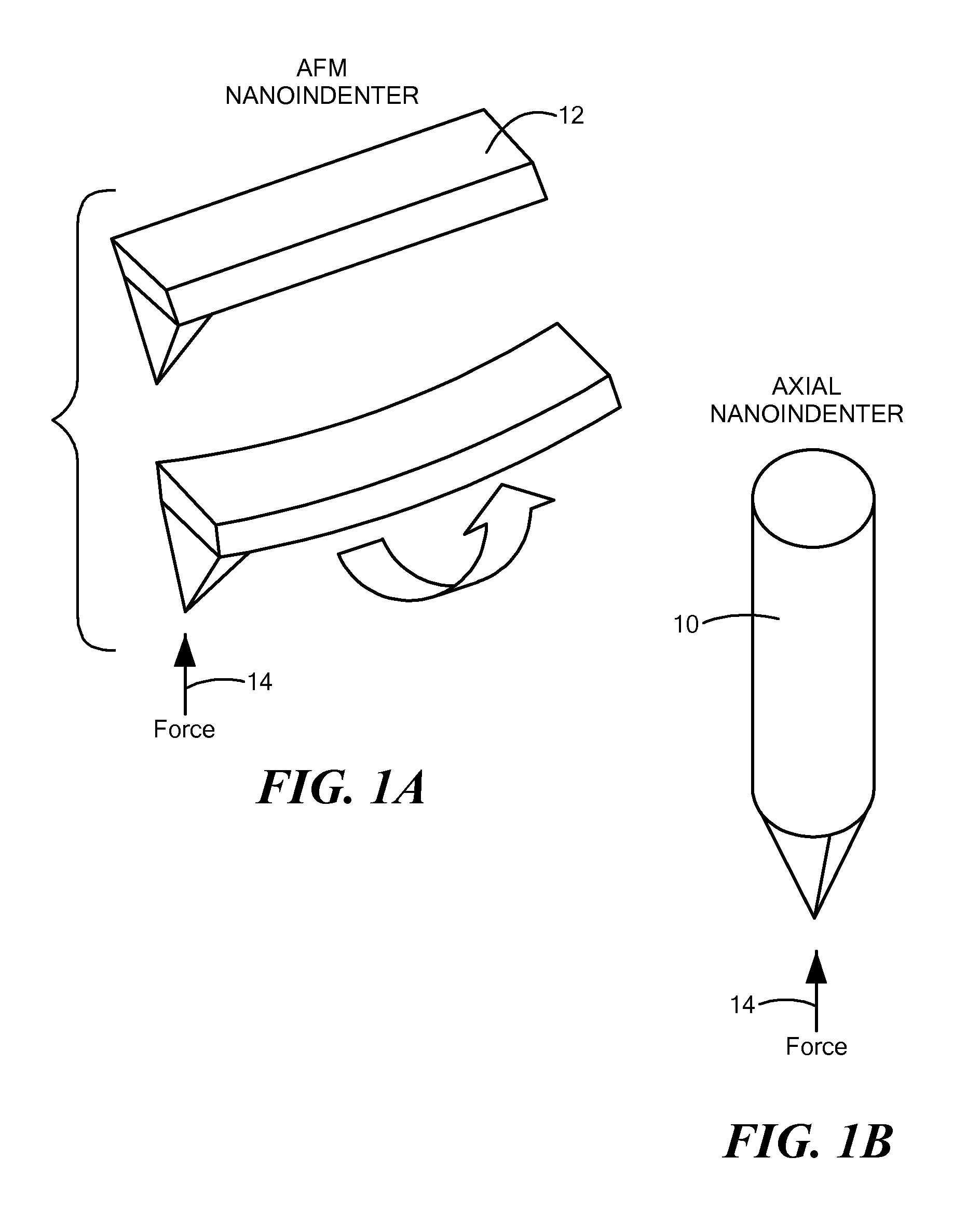Nanoindenter Multimodal Microscope Objective for Mechanobiology
a nano-indenter and microscope objective technology, applied in the field of apparatus and methods for concurrent optical and nanomechanical characterization of samples, can solve the problems of limiting the technique to a very narrow window of problems in biology, and the challenge of both existing imaging methods to provide information about the mechanical properties of imaged tissu
- Summary
- Abstract
- Description
- Claims
- Application Information
AI Technical Summary
Benefits of technology
Problems solved by technology
Method used
Image
Examples
Embodiment Construction
[0008]In accordance with embodiments of the invention, apparatuses and methods are provided for characterizing a sample in situ. In accordance with one set of embodiments of the invention, method are provided having steps of:
[0009]applying a force, by means of a nanoprobe, centered upon a probed locus on the surface of a sample;
[0010]illuminating, with light, a region of the sample including the said probed locus on the surface of the sample;
[0011]measuring a mechanical response of the sample to the applied force; and characterizing an optical interaction between the illuminating light and the region of the sample including the probed locus.
[0012]In accordance with further embodiments of the present invention, the nanoprobe may be a nanoindenter or a tip of an atomic force microscope. The measured mechanical response may be a displacement as a function of force.
[0013]In various alternate embodiments of the present invention, the optical interaction may be light scattering or a non-l...
PUM
 Login to View More
Login to View More Abstract
Description
Claims
Application Information
 Login to View More
Login to View More - R&D
- Intellectual Property
- Life Sciences
- Materials
- Tech Scout
- Unparalleled Data Quality
- Higher Quality Content
- 60% Fewer Hallucinations
Browse by: Latest US Patents, China's latest patents, Technical Efficacy Thesaurus, Application Domain, Technology Topic, Popular Technical Reports.
© 2025 PatSnap. All rights reserved.Legal|Privacy policy|Modern Slavery Act Transparency Statement|Sitemap|About US| Contact US: help@patsnap.com



